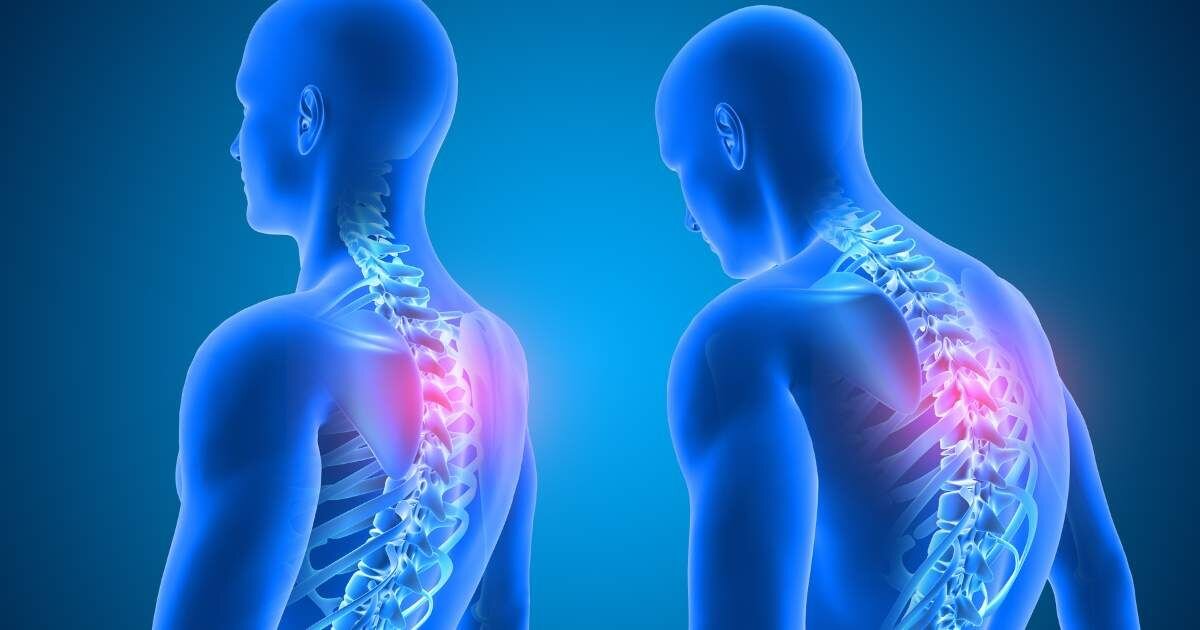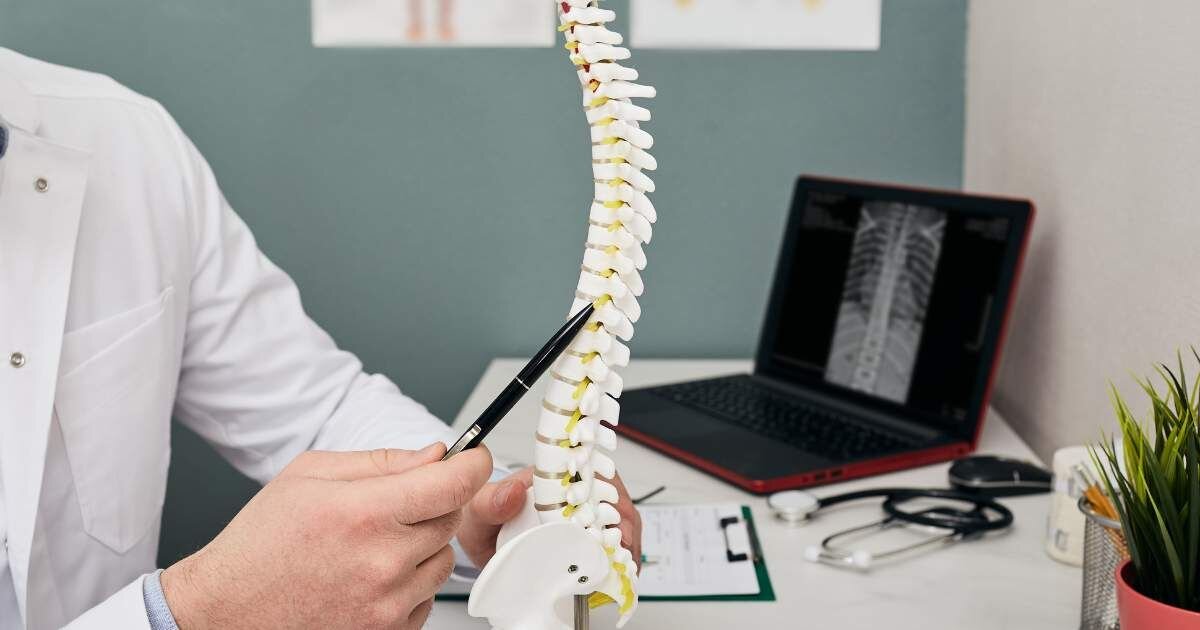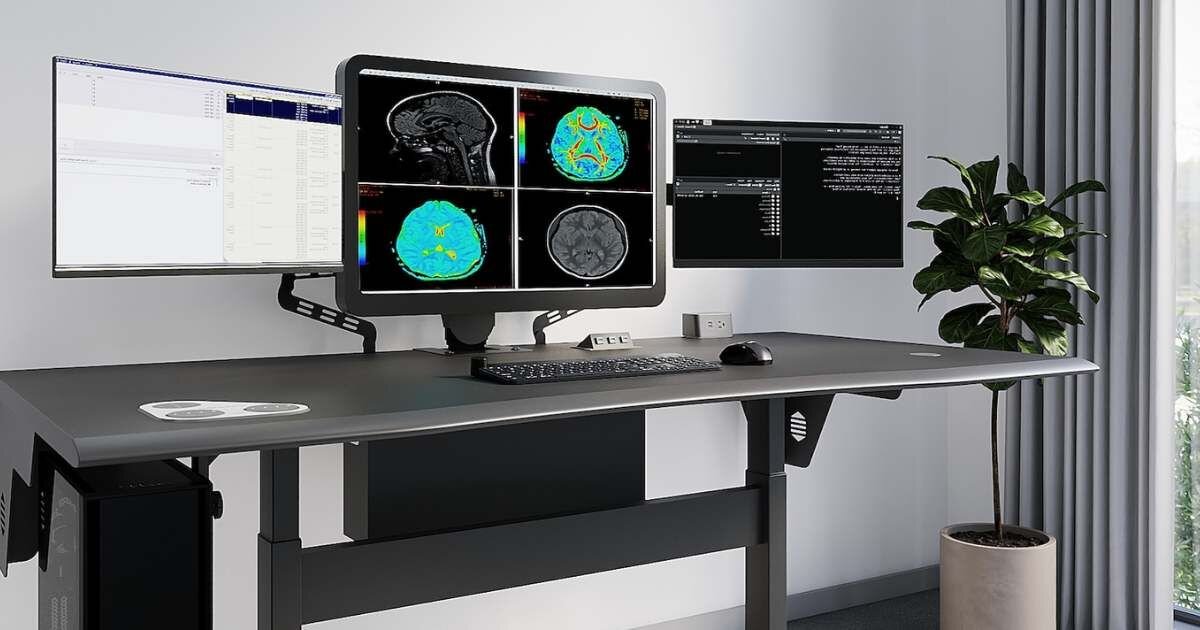
We collect basic website visitor information on this website and store it in cookies. We also utilize Google Analytics to track page view information to assist us in improving our website.

Radiologists frequently face significant ergonomic challenges associated with improper posture during day-to-day operations. Alarmingly, 25% report suffering from neck pain, while 32% experience low back pain. Long hours in front of computer screens, typically sitting in unideal positions, have become more apparent, leading to discussions of the importance of ergonomic workstations and actions to prevent health issues.
RedRick Technologies has created this guide to helpful posture tips and ergonomic adjustments that can improve comfort and overall health outcomes for radiologists.
At RedRick Technologies, we design and develop ergonomic workspaces for healthcare professionals that include workstations, monitor mounting solutions, accessories, and peripherals. We also provide ergonomic design services that help organizations implement ergonomic principles for improved space design and functionality. Get in touch and let’s find ways to improve the ergonomic functionality of your workspace.
The complex issues inherent in a radiologist's work environment can create significant physical and mental stressors, ultimately impacting productivity.
After shifting from traditional film to digital systems like PACS (Picture Archiving and Communication Systems), radiologists have spent most of their workday at a computer station. This transition had caused sedentary practices, increasing the risks of repetitive stress injuries (RSIs). Studies show that 58% of radiologists report symptoms of RSIs, with 38% officially diagnosed, highlighting the growing concern within the profession.
Radiologists spend long hours in front of monitors which directly causes chronic neck, back, and musculoskeletal pain. A survey revealed that 25% of radiologists suffer from neck pain, while 32% battle low back pain. While these issues personally affect radiologists physically–they also create a growing issue in terms of productivity and efficiency. For instance, the prevalence of low back pain is noted as the sixth most impactful condition globally in terms of diseases.
With this growing percentage of pain and discomfort, ergonomics intervention is of urgent need.
The nature of radiology work often requires awkward positioning for extended periods, creating ergonomic challenges. For example, 55% of radiologists spend more than two hours daily sitting in uncomfortable positions, exacerbating symptoms of musculoskeletal disorders.
The work demands of radiologists call for long hours in front of computer screens, signifying the importance of maintaining good posture to decrease physical side effects.
Radiologists don’t often think about posture–with a heavy workload and need for full attention to detail in the medical field, posture can often slip their minds. However, to perform daily activities at best, it is important to realize how these bad habits can affect work productivity over time.
When radiologists sit incorrectly or hunch over screens, their risk of developing neck, back, or musculoskeletal disorders increases. Not only do these conditions cause discomfort, but they can also lead to long-term disability, affecting a radiologist’s ability to work and carry out daily tasks.
Poor posture directly correlates to increased pain in the neck and back regions among radiologists. Bad habits like not maintaining a neutral spine position and lack of movement put stress on the cervical and lumbar regions, amplifying discomfort over time. Chronic pain conditions can arise, potentially leading to significant economic issues. The annual cost to the U.S. economy from low back pain alone ranges from $100 billion to $200 billion, with one-third of that cost directed to medical expenses, and two-thirds directed to indirect costs of absenteeism, and loss of productivity.
Understanding how bad posture affects the health outcomes of radiologists creates a discussion about the need for ergonomic adjustments in the workplace.

Various solutions have been developed to combat ergonomic challenges such as bad posture in radiologists. These tools are key for alleviating strain and preventing injuries, promoting a healthy atmosphere that increases productivity and attention to detail.
A proper workstation is one of the many important facets of correct posture. Unlike normal chairs, radiologists need chairs with adjustable height, lumbar support, and armrests that reinforce the spine’s natural curve, eliminating the natural habit of hunching over.
Similarly, desks need to be adjusted for height to ensure that forearms and wrists are supported and in a neutral position while using keyboards and mice. These adjustments allow for personalized radiologist workspaces that pertain to their specific height and personal preferences.
The position of the focal point of a computer screen should be at or below eye level. Focal points that are higher than eye level can lead to neck and eye strain from tilting your head back. The monitor also needs to be arm’s length away. Using multiple monitors encourages movement in the neck from side to side. An ergonomic monitor mount for multiple monitor sets should allow for monitors to be at the same height and in a curved pattern so that each monitor is equal distance from the user’s eyes.
A significant change in the advancement of ergonomic technology is the implementation of a sit/stand workstation. Since many hours of a radiologist’s day are spent staring at a computer screen, it allows them to alternate between the two reducing the negative health effects of prolonged sitting.
A study revealed that radiologists who used sit/stand desks reported a 54% reduction in back and neck pain. This dynamic working style encourages movement and flexibility in their work habits but also helps reduce musculoskeletal strain and boosts metabolic health.

Sitting in the same position for extended periods can lead to back, joint, and neck pain. Adjusting seat height and the backrest periodically throughout the day can change positions and create more comfort, improve circulation, and reduce pressure on certain parts of the body.
Footrests are also a great solution to increase comfortability. For those who cannot comfortably reach the floor, a footrest can prevent sitting on the edge of a seat, preventing restricted blood flow to the thighs.
Although the job of a radiologist is filled with many important tasks that fill up the day, breaks are crucial to eliminate being sedentary for long periods. To prevent muscle stiffness and strain, implement the 20-20-20 rule: every 20 minutes, look at something 20 feet away for 20 seconds. This can help with refocusing and repositioning. During those 20 seconds, consider integrating micro-exercises.
A radiologist’s demanding workload leaves little time for exercise. Here are some simple exercises that are easily integrated into the daily routines of radiologists to help prevent pain from improper posture:
1. Spinal Twists: Remain seated and gently twist your upper body to the right and left, while holding each position for about ten to fifteen seconds. Hold onto the back of a chair for leverage. This exercise relieves tension in the spine and improves flexibility.
2. Upper Body Strength: Clasp your hands together and stretch them above the head, with your palms facing upward. Gently lean from side to side and hold for ten to fifteen seconds to stretch the torso and arms. This strengthens the shoulders, back, and sides.
3. Neck Stretches: Slowly turn your head from side to side holding each position for three to five seconds. This exercise prevents neck pain after remaining sedentary for long periods.
4. Shoulder Shrugs: Raise shoulders towards ears, and slowly drop them to their natural position, repeating this movement several times. This relieves tension in the trapezius muscles, shoulders, and back.
5. Wrist Flexes: Extend your arms and flex your wrists. Alternate between pointing your fingers upwards and downwards. This exercise is helpful after using a mouse and having limited wrist movement.
6. Standing Leg Lifts: While standing, lift one leg back or to the side in front of you to stretch your lower back and hip flexors. This exercise relieves your hips after putting pressure on them for sitting too long.
7. Seated Leg Extensions: While seated, extend one leg straight and lean over your leg for a few seconds then repeat on the other leg. This will stretch your hamstrings, back, and glute muscles.
8. Pelvic Tilts: Tilt your pelvis forward and back while sitting. Arching and flattening your back will strengthen your lower back and abdominal muscles.
9. Lower Back Stretch: Stand up and let your lower body and arms hang down facing your knees. This will stretch out your lower back and hamstrings.
10. Forearm Pinch: Squeeze your shoulder blades together as if they are trying to hold an object between them. Hold for five to ten seconds, then release and repeat.
For radiologists, maintaining proper posture and implementing ergonomics solutions are crucial to sustaining physical health, and maximizing productivity for accurate diagnostic results. By adjusting workstations, taking regular beaks, and performing simple exercises, radiologists can reduce sedentary work habits that lead to physical strain. RedRick Technologies encourages all radiologists to assess and improve their work environment by providing ergonomic tools to ensure a healthy, more productive professional life.
Contact us today to learn how you can implement ergonomic solutions into your radiologists' workstations.